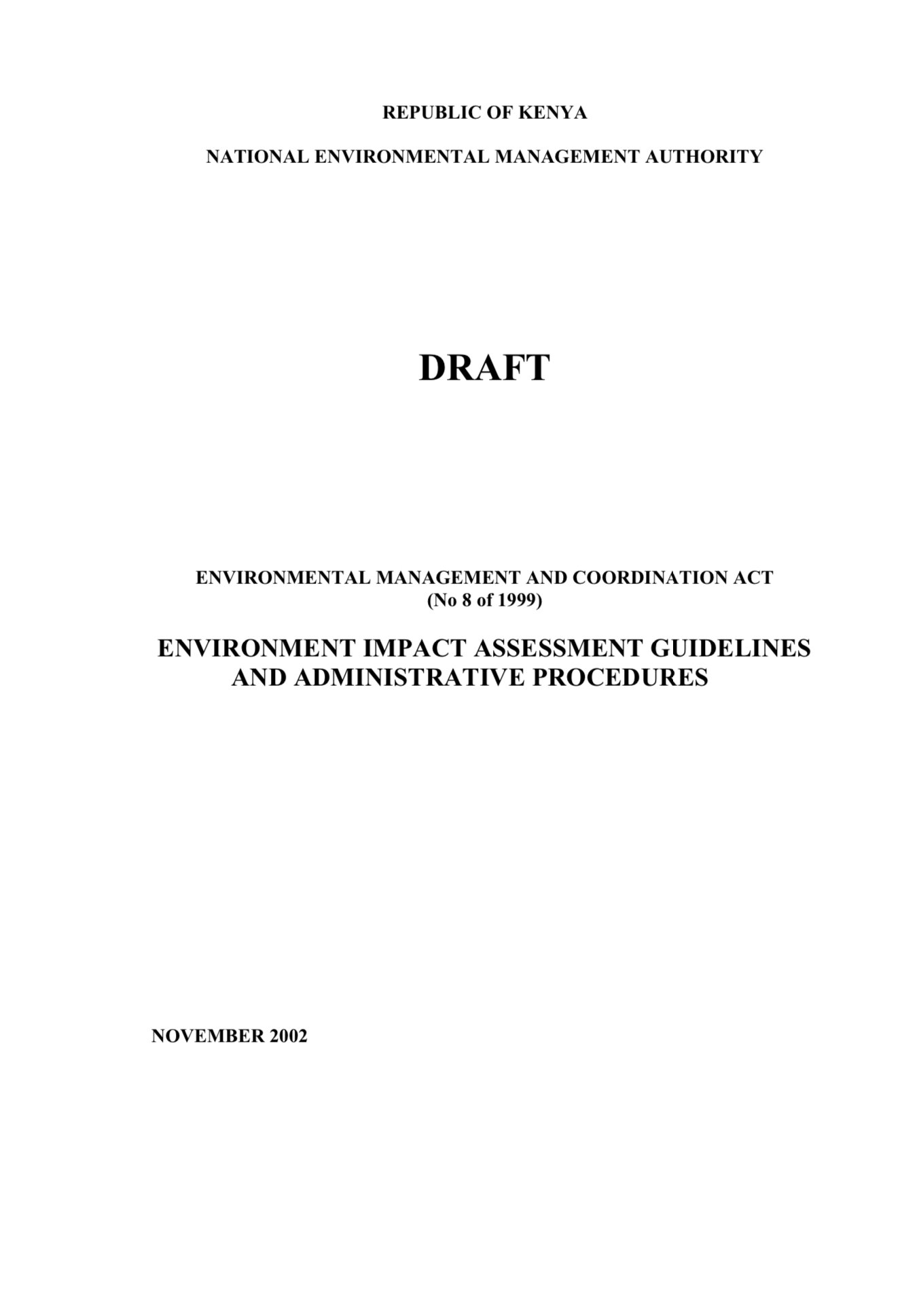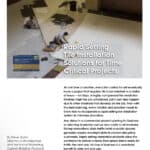EIA Guidelines For Hydrology (Kenya)
The major purpose of these guidelines is primarily to assist in the integration of environmental concerns in economic development to foster sustainable development in Kenya.
LOVE THIS ITEM?
Download For Free
Subscribe to download this item for free! You'll unlock unlimited access to thousands of construction documents, templates and tutorials.
Start Your 14-Day Free TrialProduct FAQ
You will receive your documents and files immediately after you complete the checkout process. You will receive a link on the checkout page as well as via email.
As long as the document remains on Essential Construction you will be able to download it once purchased.
Yes, in most cases (with the exception of stock photography and ebooks) the files you will receive are editable.
We accept debit, all credit cards (Visa, Amex Mastercard etc) as well as payments via Apple Pay, Google Pay and Paypal.
Our return policy varies based on the product, for more information you can find our detailed return policy here.
Our documents are for use on your projects. You may not resell these documents on other marketplaces.
Full Description
Kenya has since independence pursued policies and strategies aimed at achieving reasonably high levels of development for its rapidly increasing population. Over time, the natural resource base has become severely stressed due to unstainable use of the resources leading to scarcities of vital environmental goods and services in many parts of the country. This has made it imperative to harmonize environmental laws in Kenya under EMCA for the purpose of coordinating environmental management. The National Environment Action Plan (GoK, 1994) and the National Policy on Environment emphasize the need for environmental impact assessment (EIA) on development projects. The Environmental Management and Coordination Act (1999) clearly makes EIA mandatory for all projects specified in the Act. In the NEAP (GoK, 1994), the Government proposes to “integrate environmental conservation in economic development to provide sustainable development for posterity. This includes integration of environmental considerations in development planning at all levels; promotion of environmentally sound use of both renewable and non-renewable resources in the process of national development; establishment of an institutional framework for coordinating, monitoring, and enforcing environmental regulations and standards; and finally providing human and financial resources to support an environment and development coordinating agency and an EIA institution”.
These EIA Guidelines and Administrative procedures have been developed in response to the above policy framework and legal provisions. Their major purpose is primarily to assist in the integration of environmental concerns in economic development to foster sustainable development in Kenya. EIA identifies potential environmental impacts of proposed development activities as well as policies, plans and programmes of the Government, including those undertaken jointly with bi-lateral and multi-lateral institutions. In addition EIA identifies measures to mitigate the negative impacts, while maximizing on the positive ones. EIA is essentially a tool that facilitates informed decisions-making on sustainable development in Kenya.
This site uses Akismet to reduce spam. Learn how your comment data is processed.











Reviews
There are no reviews yet